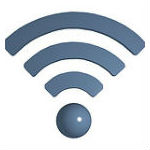 “A lot of people don’t know how healthy these companies are,” commented Jeff Kohler, co-founder and chief development officer for JAB Broadband.
“A lot of people don’t know how healthy these companies are,” commented Jeff Kohler, co-founder and chief development officer for JAB Broadband.
Kohler was referring to the 101 wireless Internet service providers that JAB Broadband has acquired since its founding in 2006.
Kohler has 20 years of experience in telecom with an emphasis on the wireless and financial aspects of the business, and he became attracted to broadband wireless because, with few exceptions, he found that companies in this business were “all good solid businesses,” he said.
“They all make money,” added Kohler. “It looked like the cable industry without the capex.”
JAB now has 170,000 subscribers in 14 states in the Midwest, the Rocky Mountain and the Southwest. Kohlerbelieves that makes JAB the largest WISP in the U.S. by a wide margin. In total he estimates there are about 2,500 WISPs nationwide, serving about 3 million subscribers.
If readers haven’t heard of JAB, they may be familiar with one of the company’s five brand names, which include Prairie iNet, SKYBEAM, Digis, T6 and Rhino Communications.
Within the next year, JAB hopes to convert to just a single brand, however.
WISP Consolidation
JAB serves primarily rural areas and suburbs that are distant from core metro areas. Using the doughnut-and-hole analogy, Kohler said JAB serves the doughnut, but stays out of the hole. About 70% of the locations in JAB’s coverage area can get DSL and about 40% have a cable competitor.
The company typically offers service at rates between 5 and 20 Mbps. “Our typical shot is four miles or less,” said Kohler. But the company sometimes serves companies as far as eight miles from a tower.
JAB has 3,000 towers and 9,000 access points in its network, according to Kohler.
“We’re primarily a Cambium shop,” commented Kohler when asked about equipment vendors. In addition the company uses quite a bit of equipment from Ubiquiti. That equipment is used primarily to serve less congested areas or areas with fewer customers per tower.
JAB mostly uses unlicensed spectrum, but it does have some 2.5 GHz licenses.
Acquisition Criteria
When looking for new acquisitions, JAB is interested primarily in companies that use either Cambium or Ubiquiti and that are adjacent to one of JAB’s existing service areas. If a company uses equipment from a different manufacturer, JAB installs one of its preferred vendors and puts all new customers on that infrastructure, eventually phasing out the existing equipment.
Focusing on properties adjacent to existing JAB operations provides a number of benefits, explains Kohler.
“All of our people and vehicles are close by for servicing,” he noted. In addition, he said “we can eliminate duplicate towers we don’t need.” And typically the company doesn’t need to establish a contract with a new Internet point of presence.
TV White Spaces
When asked about TV white spaces, Kohler said “we’re looking at it very closely.” He said the company will deploy some white spaces equipment to serve areas that are difficult to reach with the company’s usual equipment because of line of sight issues.
“The customer premises equipment is still very expensive,” commented Kohler. JAB pays about $95 for CPE from Ubiquiti, he said. But WISPs that are using white spaces equipment are spending about $700 for CPE, he said.


